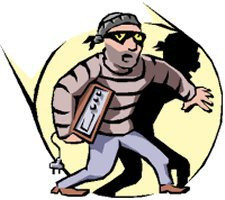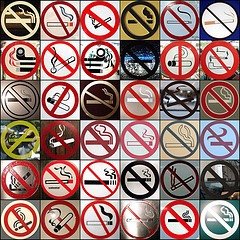1.1 Paco is going to the theatre tomorrow (Uses of the continuous)
Importante
Present Continuous Tense: Uses
The present continuous or progressive is then mainly used for actions that occur at the moment of speaking/now...
But apart from being used for actions happening at the moment of speaking, the present continuous is also used for:
 |
| By Joao Alves. C. Common |
- Actions happening in a period around the present moment in time (not necessarily at the moment of speaking).
- Andrés's sister is driving his car this month.
- Paco is making a great effort to speak English properly.
- Future plans and arrangements (frequently fixed plans in the near future).
- Paco and his friends are going to the theatre tomorrow
- Next weekend, Paco is playing tennis with Andrés.
- Trends or changes.
- More and more people are using computers to listen to music.
- That child is getting bigger every day.
- Paco is getting used to wearing suits.
- Repeated actions which are irritating to the speaker (normally with always, constantly...)
- Paco's mother is always coming late.
- Andrés is constantly telling Paco to study English.
Objetivos
Time expressions give us a clue of the correct verb tense we must use. Here you have a useful chart concerning the Present Continuous:
| USES | TIME EXPRESSIONS |
| Actions happening in a period around the present moment in time (not necessarily at the moment of speaking) |
(RIGHT) NOW, AT THE MOMENT, TODAY, THIS AFTERNOON, THIS MONTH... |
| Future plans and arrangements (frequently fixed plans in the near future). | TOMORROW, NEXT WEEK/MONTH, IN JULY... |
| Repeated actions which are irritating to the speaker | ALWAYS, CONSTANTLY, REPEATEDLY... |
Example Exercise
Read the sentences below and decide what they are used for:
| a. Action occurring at the moment of speaking | 1. Sonia is meeting her friends on Saturday. |
| b. Action happening around the present moment in time | 2. Paco's brother is living with his girlfriend at the moment. |
| c. Future plan or arrangement | 3. Andrés is watching a tennis match on TV |
| d. Trend | 4. You're always complaining about how hard it is. |
| e. Repeated action which is irritating to the speaker | 5. Look! That person is stealing a computer in the shop. |
| 6. People are using computers more and more often. |

|
| By p. C. Commons |
Further Knowledge
ROB or STEAL?
- Sometimes, we have problems when deciding if we need the verb to rob or to steal, because in Spanish, they are both robar.
- rob a person or a place. Al Capone robbed a bank.he robbed me using a gun.
- steal something. He stole my money. They stole my bike. Click here if you want to improve the use of to rob and to steal.
Speaking Activity
Answer the following questions.

|
| By Tom Magliery. C. Commons |
- What are you doing now?
- Are you and your friends meeting next Saturday?
- Are you studying this week?
- Are people in your village, town or city giving up smoking?
- Are you doing sports this month?
- Is any of your friends travelling next week?
- Where are you going this afternoon?

|
| By Pilar Acero ISFTIC. C. Commons |
Now record your answers and listen to yourself.
Further Knowledge
There are plenty of exercises to improve the use and form of this tense.
- For example, click either here or here if you want to complete easy exercises.
- For a more complex practice where you have to decide whether you need the present continuous or the present simple, click here.
Now that we know the form of the positive sentences in the Present Continuous Tense and what this tense is used for, let's have a look at its negative form in the following section!